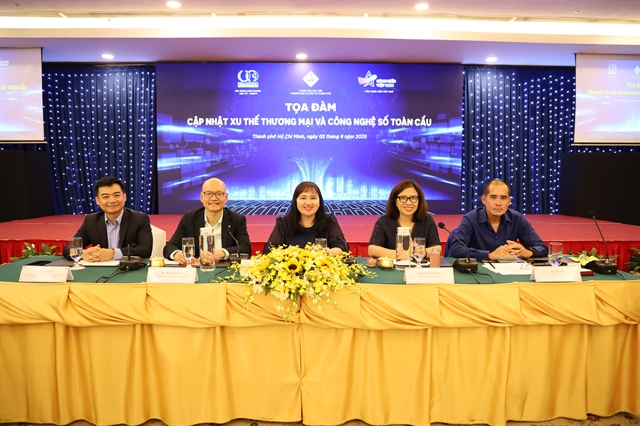Global trade fluctuations present challenges but also opportunities for Vietnamese businesses to speed up transformation of production and strengthen internal capabilities, according to the Investment and Trade Promotion Centre of HCM City.

HCM CITY — Global trade fluctuations present challenges but also opportunities for Vietnamese businesses to speed up transformation of production and strengthen internal capabilities, according to the Investment and Trade Promotion Centre of HCM City.
Speaking at the “Global Trade and Digital Technology Trends Update” seminar on June 3, Cao Thị Phi Vân, ITPC’s deputy director, said: “In the context of increasing global economic volatility, particularly driven by the US's reciprocal tax policies, tensions in global supply chains and the growing trend of trade protectionism, the Vietnamese business community has an urgent need to swiftly adapt and reposition its development strategies.”
The US remains Việt Nam’s largest export market, with its trade surplus steadily increasing, from approximately US$63.4 billion in 2020 to nearly $106 billion in 2024, but like many other countries, Việt Nam is at risk of facing reciprocal tariffs from the US, she said.
The Vietnamese Government is stepping up efforts to ensure a more balanced trade relationship with the US while taking other strategic measures, she said.
These include maximising the potential of the domestic market, tightening verification of product origin, supporting joint investment projects between Vietnamese and US firms, she said.
The current global uncertainties offer Việt Nam an opportunity to reassess its internal strengths, reinforce foundational capacities and adopt a more sustainable development mindset, she pointed out.
The Government and business community have been working to diversify markets, product lines, and supply chains; enhance the quality and competitiveness of Vietnamese goods and services; and responding with agility to global economic trends.
Dr. Trần Ngọc Anh, a professor at Indiana University in the US, said the US government's tough stance on China, especially in high-tech sectors, is accelerating a shift in global supply chains away from China.
In this context, Việt Nam has emerged as one of the top alternative destinations as multinational corporations seek to diversify production bases, he said.
“Advanced technical processes that generate greater added value are showing a tendency to relocate. This offers Việt Nam a chance to escape its conventional subcontracting role and progress towards engaging in higher-tier segments of the value chain."

While acknowledging the risk of higher US tariffs on Vietnamese exports, he pointed out that they would still be lower than those imposed on Chinese goods, allowing Việt Nam to maintain a relative competitive advantage.
However, he cautioned that entering the US market is becoming increasingly complex due to stricter legal procedures.
Vietnamese enterprises should collaborate closely with industry associations and legal experts to navigate the export process more effectively, he advised.
Vũ Tú Thành, deputy regional managing director of the US-ASEAN Business Council, said most Vietnamese exports such as textiles, footwear, wood products, and agricultural goods do not compete directly with domestically made US goods or affect local jobs.
So businesses could hope that the final tariffs imposed by the US on these items would be carefully considered.
Speaking about digital transformation, Dương Hồng Loan, director of the Institute for Vietnam Initiatives, said it is vital for businesses to stay resilient amid volatility and people are at the core of this transformation.
She cited alarming figures on the digital skills gap at Vietnamese enterprises: 44 per cent of workers lack basic digital skills, 37 per cent only have a level of low proficiency and 43 per cent have no advanced digital skills.
She said this means over 60 per cent of enterprises struggle to achieve digital transformation, particularly in areas such as data analytics, cybersecurity and automation.
To address this gap, she proposed a strategic roadmap focusing on establishing a digital competency framework, designing learning roadmaps tailored to different employee groups, fostering a corporate culture of continuous learning, and providing intensive training in technological skills.
The seminar was organised by the Investment and Trade Promotion Centre, the Institute for Vietnam Initiatives and the US-ASEAN Business Council. — VNS





